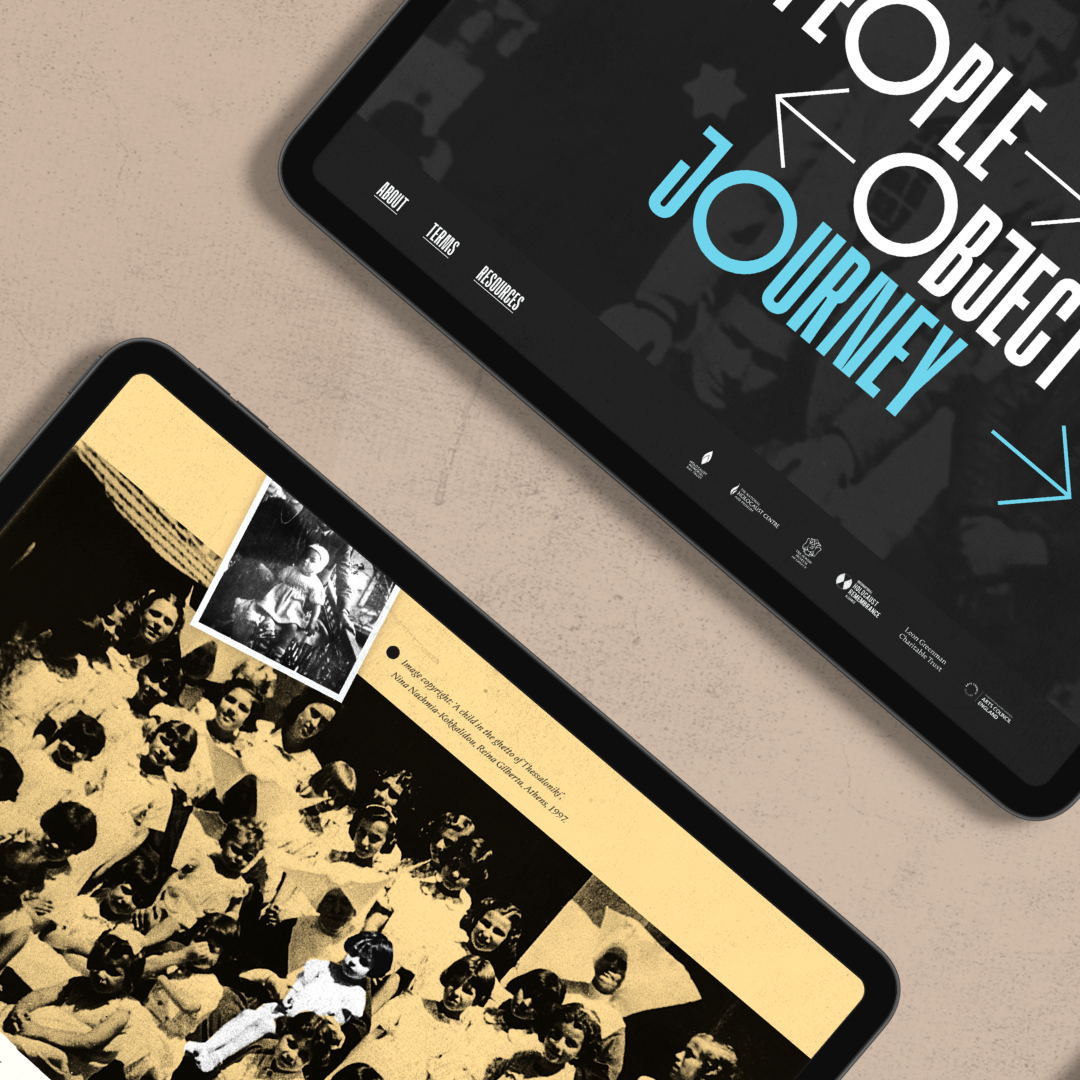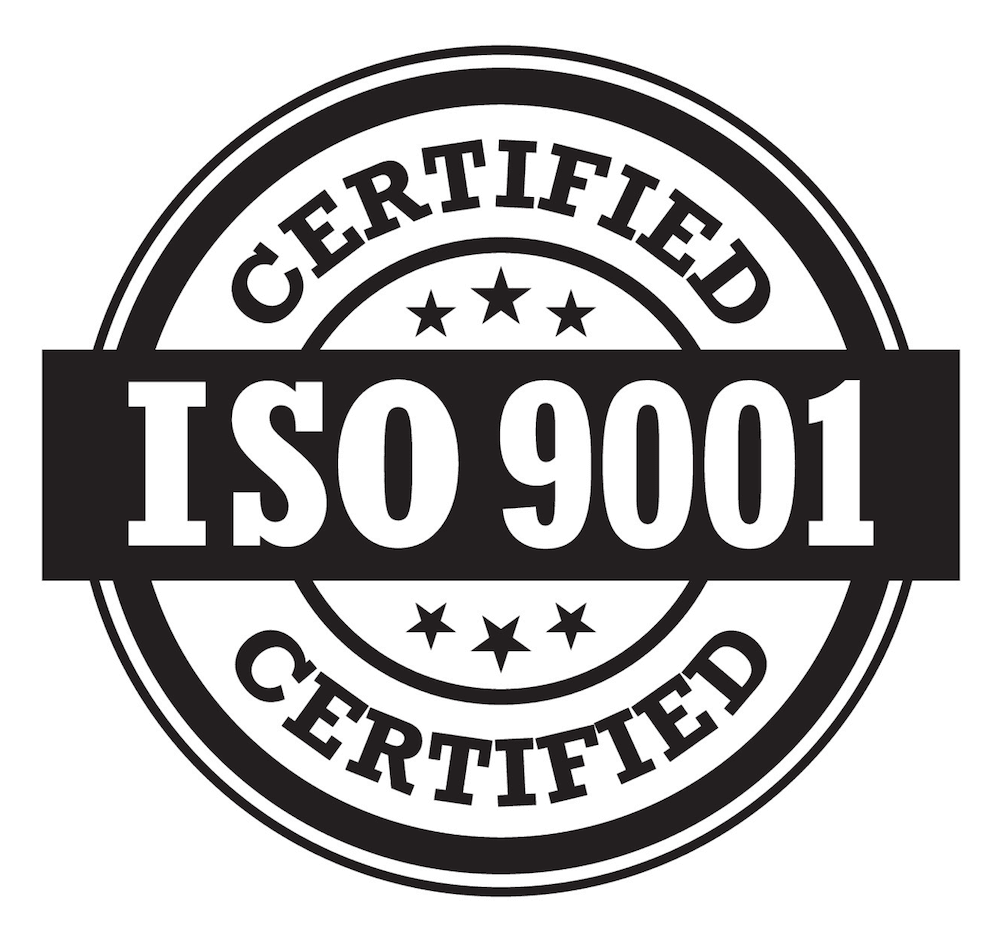Back to Blog
History told through a digital experience
Alejandra Romero , Adam Pietrzyk - 12 May 2023 - 8 min read

The role of meaningful typography and visuals in interactive storytelling

Talking about historical and political topics in an interesting and engaging way is not easy. You need to tackle many challenges, balance different points of view and – in many cases – work with a range of historical sources. That’s not mentioning the marketing objectives you need to meet. How do you reconcile both sides and create a project that captures the attention of your audience? Read how Rhapsody took on a challenge of this kind with a project telling the story of Holocaust victims.
How to talk about history in a modern way
The world is constantly changing and so are the ways knowledge and information are disseminated. That includes historical information. In present-day museums it is no longer necessary to look at exhibits behind glass and to read lengthy descriptions. Instead, multimedia presentations, interactive stations, 3D historical films and many other new technological solutions are increasingly being used.
Museums are becoming modern facilities that take you back in time and allow you to engage with history using all your senses. Can similar methods also be applied to digital projects? Of course they can!
The Ordinary Objects Extraordinary Journeys interactive website – which we created to tell the story of the murdering of Jews during World War Two – is a case in point. It illustrates how close collaboration with a client, understanding history and immersive visuals help bring even the most sensitive topics closer to modern audiences.

Telling the story of World War II atrocities is not easy. It requires sensitivity, empathy and the right approach. While working on the Ordinary Objects Extraordinary Journeys project, our team spent countless hours liaising with the client. This was partly because of the delicate nature of the topic, but also due to the need for historical consultation and a deep understanding of the history of the Holocaust.
Finding the right balance for visual storytelling
Working with artefacts from the cooperating museums was a very nuanced process. It had a huge impact on the creative direction, but also on the overall concept and storytelling, which needed to be well crafted for the subject in question.
Our aim was to create engaging, immersive experiences which would take the viewer back to that era and give them an understanding of the daily realities of the Holocaust.
It was a big challenge: not only did we have to tell the right story and find the proper words, but we also needed to strike the right balance with the imagery. The visuals had to evoke the spirit and style of the time, all while being fresh and attractive enough to appeal to the modern viewer.
At the same time, the graphics could not be too bold in order to respect the seriousness of the story and the traumatic experiences of the protagonists.
“Rhapsody blew me away right from the moment we met them when they pitched to us, notably how they managed to make a wide variety of websites with different subject matters engaging, immersive and inclusive. It was incredible seeing our ideas for the project not just brought to life, but enhanced, strengthened and advanced by Rhapsody. We are so thrilled with the final result, and are confident the website will achieve our goals: to engage people with Holocaust education, through artefacts, and to increase knowledge and awareness of the Holocaust. We are already planning on adding more artefacts to the website and look forward to continuing our relationship with Rhapsody – if they can put up with us again!” Dr Rachel Century – Director of Public Engagement and Deputy Chief Executive | Holocaust Memorial Day Trust
Creating an experience that takes you back in time

The stories of the Jewish victims of World War Two are showcased on the website in three thematic blocks: PEOPLE – OBJECT – JOURNEY.
We wanted to capture the art of storytelling and relate the events that took place in the past in such a way as to transport the viewer. Usually, they only hear about this part of history through school lessons and TV. Using 3D objects and multisensory design, we aimed to create something special and to establish a new type of narrative. Our work was centred around the website’s aesthetic elements including not only precisely chosen typography, but also navigation buttons and other functional elements. We wanted it to be a “window to the past”.
In the first part – PEOPLE – we begin the story by exploring the biographies of individual characters. It is not a gloomy, overwhelming and lengthy story. We have used simple, approachable language that allows us to delve into the personal threads of the characters’ lives while not creating unnecessary distance from the characters. The text is short, but informative and interesting. It gives us a better understanding of the problems faced by our protagonists, as well as their motivations, needs and emotions.
In the SUBJECT section, the viewer is immersed in the world of everyday objects that accompanied the characters. We see pre-war chess pieces, children’s knitted socks, personal diaries and documents. These seemingly ordinary objects reflect the traumatic nature of the individual experiences and allow us to better understand the daily life of the characters.
JOURNEY, on the other hand, is an interactive way to understand the journeys that Jews were forced to make during the war. A multimedia map allows visitors to learn the routes they took and the hardships they had to endure. The website was designed to make visitors feel that they were actually taking part in a journey through newly presented pages of history.
“When we and HMDT agreed to do a collections-based project together, we wanted to ensure it was in the service of telling the stories of some lesser-known survivors of the Holocaust. Some of the objects seem mundane. Some seem beautiful. But all are priceless in what they tell us about the annihilation of normal Jewish family life right across Europe. There is a common misperception that the Holocaust just took place in Germany (and maybe Poland). This exhibition tells four stories spanning Greece, France, Austria, Germany, Poland, England and Scotland”. Marc Cave, Director of The National Holocaust center and Museum
Finding the right font that will make a difference
Philosopher Marshall McLuhan once famously said that “the medium is a message.” This thought can be applied to our approach: carefully selected typography plays a very important role. Our choices were far from being accidental, allowing for an immersive experience. Given that the project told the story of Jews living in European cities, we decided to use fonts that had a cultural reference to the region and its history.
Typography project ideas to make content more engaging

The first of these, Pion, was chosen for its origins (it was designed by a Polish type foundry) and its expressive nature. It allowed the designers to draw the viewer’s attention to what was most essential in the story. It emphasised the seriousness of the events, gave it a distinguished character and made it more readable – which is of vital importance, especially in a digital project. We also added a personalized ‘O’ to the font, to give the whole thing a creative touch.

“Nocturn”, the second of the selected fonts, was created by Polish typography creator Mateusz Michalski. It draws on the letters of stone plaques commemorating the victims of the Second World War in Warsaw and pre-war Hebrew signs.
Allowing history to resonate through engaging content and carefully selected typography
A creative approach that understands history and works with sources and clients is always a good starting point. But if you support these elements with interesting visuals and interactive storytelling, the chances of success are even greater. It’s crucial to find the golden ratio between historical truth and modern narrative forms.
Let the story speak through polished typography, immersive graphics and an interactive experience. It’s a language that modern audiences understand and visitors expect, be it in traditional museums and in their digital, more modern versions.
Let us tell your story
Do you want to share an important story with your audience? Trust Rhapsody If you are tackling a project of this type, you don’t have to do it alone. Share your knowledge with our experts, introduce them to the historical details in question and let them take action. Thanks to our large amounts of experience with commercial and public clients, we’re able to adapt to a wide range of subject areas and target audiences
You might also like...
Get the email newsletter and unlock access to members-only content and events.
The Frames, 201–202, 2nd Floor,
1 Phipp Street, London, EC2A 4PS, UK

Talk to us
Button TextCopyright ©2024 Rhapsody Ltd. All rights reserved.

The Frames, 201–202, 2nd Floor,
1 Phipp Street, London, EC2A 4PS, UK

Copyright ©2024 Rhapsody Ltd. All rights reserved.
